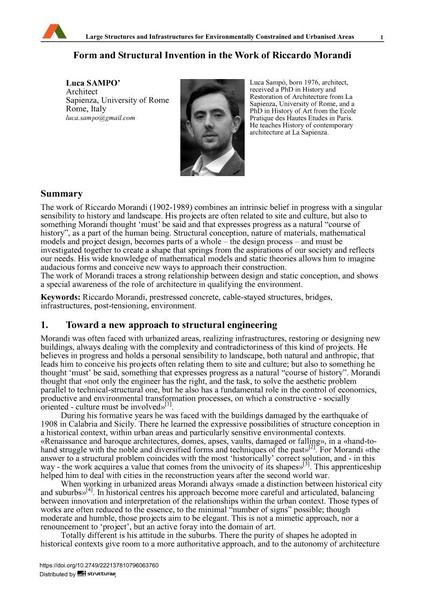Form and Structural Invention in the Work of Riccardo Morandi

|
|
|||||||||||
Détails bibliographiques
| Auteur(s): |
Luca Sampò
|
||||
|---|---|---|---|---|---|
| Médium: | papier de conférence | ||||
| Langue(s): | anglais | ||||
| Conférence: | IABSE Symposium: Large Structures and Infrastructures for Environmentally Constrained and Urbanised Areas, Venice, Italy, 22-24 September 2010 | ||||
| Publié dans: | IABSE Symposium Venice 2010 | ||||
|
|||||
| Page(s): | 782-783 | ||||
| Nombre total de pages (du PDF): | 7 | ||||
| Année: | 2010 | ||||
| DOI: | 10.2749/222137810796063760 | ||||
| Abstrait: |
The work of Riccardo Morandi (1902-1989) combines an intrinsic belief in progress with a singular sensibility to history and landscape. His projects are often related to site and culture, but also to something Morandi thought ‘must’ be said and that expresses progress as a natural “course of history”, as a part of the human being. Structural conception, nature of materials, mathematical models and project design, becomes parts of a whole – the design process – and must be investigated together to create a shape that springs from the aspirations of our society and reflects our needs. His wide knowledge of mathematical models and static theories allows him to imagine audacious forms and conceive new ways to approach their construction. The work of Morandi traces a strong relationship between design and static conception, and shows a special awareness of the role of architecture in qualifying the environment. |
||||
| Mots-clé: |
ponts
|
||||
